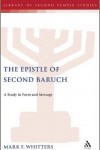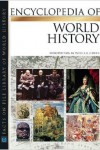
This volume honors Troy W. Martin and his thirty years of fruitful scholarship in New Testament and related disciplines. Sixteen studies by an international group of scholars explore texts and themes prominent in Martin’s own research in the Pauline letters and 1 Peter. Two articles consider rhetorical criticism of Galatians (David E. Aune, A. Andrew Das); four examine key passages and themes in Romans (Laurie J. Braaten, P. Richard Choi, Charles H. Cosgrove, and Mark F. Whitters); five explore issues of interpretation and reception of other Pauline texts (Christopher Forbes, George Lyons, Clare K. Rothschild, Todd D. Still, D. Francois Tolmie); and five address exegetical and rhetorical matters in 1 Peter (Jenny L. DeVivo, Eric F. Mason, Nancy Pardee, Russell B. Sisson, Duane F. Watson). The volume also includes a biographical tribute (Avis Clendenen and Jenny L. DeVivo), an annotated bibliography of Martin’s academic publications (Teresa J. Calpino), and indices (compiled by Najeeb T. Haddad).

What if Luke had to reteach the basic lessons of his history of the early Church? How would he communicate his point while livening up the details for someone who either was not present for the actual event or had not paid sufficient attention the first time he wrote Acts of the Apostles?
Memoirs of an Unfinished Tale is Luke’s résumé for a younger and still eager Theophilus. He reenacts stories and replays events almost as a performance before the audience’s eyes. He knows that history is not a dry memorization of facts nor a chain of events, but a compendium of vital lessons that guide growth and change. History unfolds as episodes, cohering around an intelligible theme with drama and suspense. Not unlike a play, it requires imaginative performance to both entertain and provoke an audience to react.
This is a fresh way of presenting the Bible, a method based on a rapidly growing movement in college and university classrooms called “reacting.” It is in line with more traditional ways of understanding Scripture as performed in the context of liturgy. At the same time this book challenges individual with creative poems and illustrations and a built-in system of application questions for daily readings.

Second Baruch is one of the more important apocalyptic writings among the Jewish Pseudepigrapha (written at the end of the 1st century AD and so contemporary with the New Testament). The “Epistle” is a message to the Jews of the Dispersion. Whitters is arguing that the document was once an authoritative text for a specific community, and gives us clues about the important era between the two Jewish wars of 70 and 132 AD, when Judaism was assuming radical new forms. This Epistle tells Diapora Jews how to live in a world without the Jerusalem Temple.

This comprehensive and authoritative set is rich in features to make the study of world history easier for students to understand. Arranged in six chronological eras that span prehistory to the present day, this chronological approach follows the way world history is taught and studies in the classroom.




